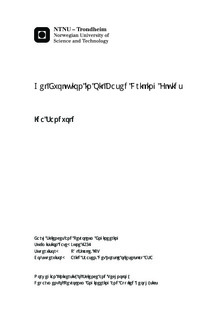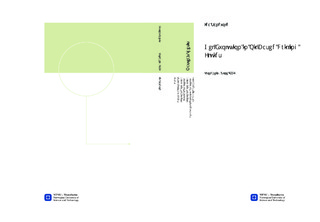| dc.contributor.advisor | Skalle, Pål | nb_NO |
| dc.contributor.advisor | Saasen, Arild | nb_NO |
| dc.contributor.author | Sandvold, Ida | nb_NO |
| dc.date.accessioned | 2014-12-19T12:16:13Z | |
| dc.date.available | 2014-12-19T12:16:13Z | |
| dc.date.created | 2012-11-08 | nb_NO |
| dc.date.issued | 2012 | nb_NO |
| dc.identifier | 565946 | nb_NO |
| dc.identifier | ntnudaim:7733 | nb_NO |
| dc.identifier.uri | http://hdl.handle.net/11250/239744 | |
| dc.description.abstract | Drilling fluids make up an essential part of the drilling operation. Successful drilling operations rely on adequate drilling fluid quality. With the development of new drilling techniques such as long deviated sections and drilling in ultra-deep waters, the standard of required performance of the drilling fluids continue to increase. Narrow pressure margins and low tolerance for barite sag requires accurate prediction of the gel evolution in drilling fluids. Increased knowledge of how drilling fluids behave during low shear rates can lead to better design of drilling fluids to avoid settling of heavy particles at the wellbore. Settling of heavy particles at the wellbore can lead to serious incidents such as stuck pipe, lost circulation, poor cement jobs and well control difficulties. Studies on the gel evolution of oil based drilling fluids could be used to optimize hydraulic modelling and evaluate phenomena such as fluid loss, barite sag and cuttings transport.The objective of this report was to investigate the gel evolution, low shear viscosity and viscoelastic properties of oil based drilling fluids. Literature study and experimental investigations were performed on water based and oil based drilling fluids to extend the understanding of low shear viscosity of oil based drilling fluids.Literature study performed on low shear viscosity of drilling fluids confirmed that there is a need for improved models for describing dynamic yield point and low shear behaviour. A case study performed illustrates the relevance of the topic, and the consequences unexpected gel effects could have when drilling a well. Two water based drilling fluid samples and one oil based drilling fluid sample were prepared and tested. Quantitative information about the dynamic properties of drilling fluids was found. Flow curves and gel strength were measured using a Fann viscometer. Four different drilling fluid samples were investigated using an Anton Paar Physica rheometer. Oscillatory tests such as amplitude sweeps determined linear viscoelastic range (LVE). Determination of the linear viscoelastic range was necessary to further investigate viscoelastic properties by performing frequency sweeps within the LVE range. Both amplitude sweeps and frequency sweeps were performed at different frequencies and strains. The viscoelastic properties investigated were structure formation, structure breakage and low shear viscosity. The effect of variables such as temperature, frequency, time of rest on dynamic yield point and viscous and elastic modulus was investigated by varying these variables in series of experiments. Experiments performed conclude that there is little correlation between the dynamic yield point found from extrapolation of flow curves using the Herschel Bulkley model and the Bingham plastic model, and the dynamic yield point found from amplitude sweeps. Amplitude sweeps showed that the three samples of drilling fluids exhibit viscoelastic behaviour, and that the linear viscoelastic range in strain rate was approximately 1 % at a temperature of 20 °C and a frequency of 1 s-1 for all tested samples. Frequency sweeps showed that the elastic modulus dominates the viscous modulus within the LVE range for all three samples. Linear viscoelastic range and dynamic yield point were found to be temperature and frequency dependent. The properties of the different samples were found to not change monotonically with frequency or temperature. Results of experiments performed on a model water based drilling fluid conclude that time of rest had little influence on the properties even for longer period of rest. A slight increase in viscosity was observed for longer rest periods. | nb_NO |
| dc.language | eng | nb_NO |
| dc.publisher | Institutt for petroleumsteknologi og anvendt geofysikk | nb_NO |
| dc.subject | ntnudaim:7733 | no_NO |
| dc.subject | MTGEOP Geofag og petroleumsteknologi | no_NO |
| dc.subject | Boreteknologi | no_NO |
| dc.title | Gel Evolution in Oil Based Drilling Fluids | nb_NO |
| dc.type | Master thesis | nb_NO |
| dc.source.pagenumber | 129 | nb_NO |
| dc.contributor.department | Norges teknisk-naturvitenskapelige universitet, Fakultet for ingeniørvitenskap og teknologi, Institutt for petroleumsteknologi og anvendt geofysikk | nb_NO |

